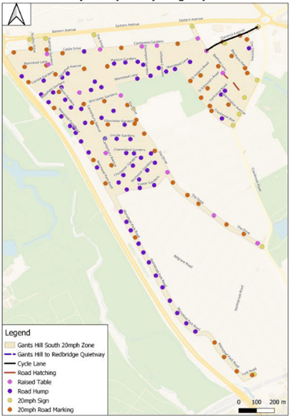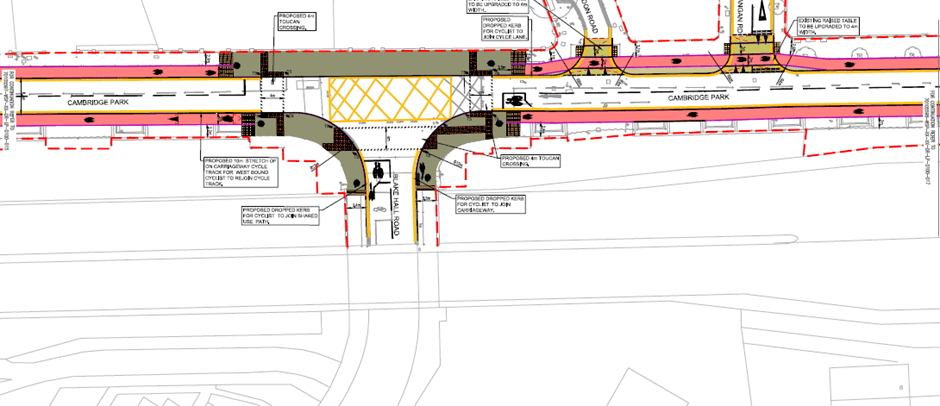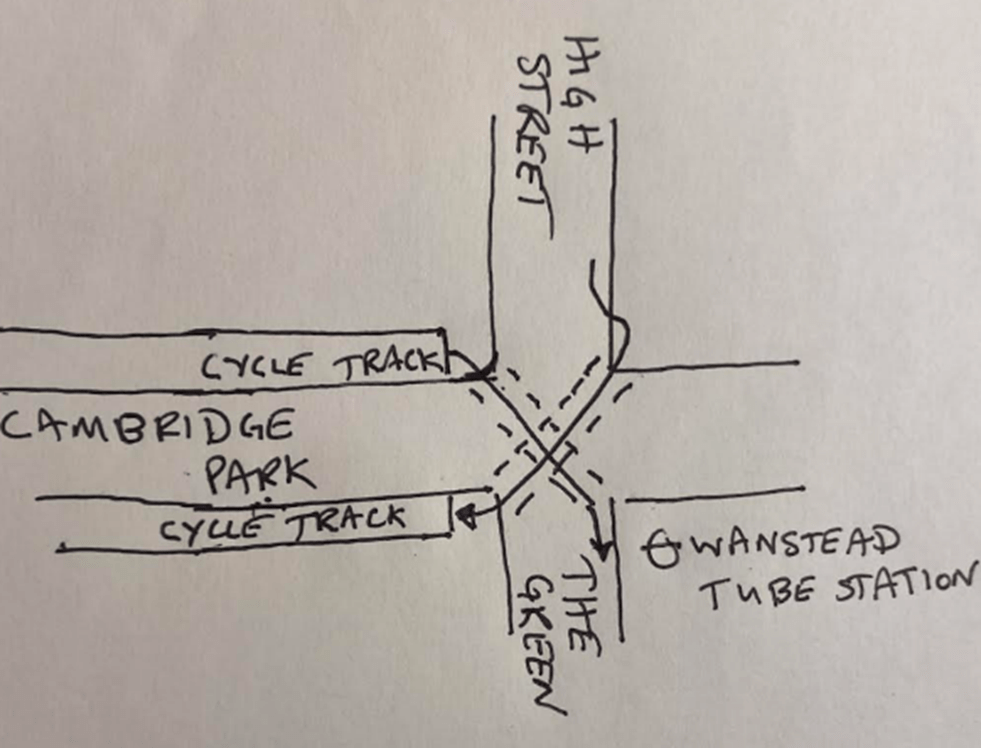
Let’s get behind this scheme Please do respond positively.
This is an ambitious scheme and all the better for it. If it goes ahead – and we hope that it will – Redbridge will have a decent sized 20mph zone, that is, a set of streets with 20mph speed limits and the necessary physical measures, in this case speed humps, to make sure that drivers stick to the speed limit. The scheme also includes a cycling quiet route from Gants Hill to the Redbridge roundabout. From here cyclists can progress towards the city via Wanstead and Leytonstone or using C16.
20 mph zones are a good thing.
In 2019 the National Institute for Health and Care research carried out a review of studies into the effectiveness of 20mph zones and found that ‘introducing 20mph zones appeared effective at reducing the number and severity of collisions and casualties (nine studies, six from the UK)’.
The Royal Society for the Prevention of Accidents ‘strongly supports the use of 20mph zones as they are an effective means of reducing road crashes and casualties. They are very effective at protecting our most vulnerable road users, including children, pedestrians and cyclists, and significantly decrease the risk of being injured in a collision. RoSPA encourages their greater use, especially in residential areas’.
Road Safety Factsheet, 20mph Zones and Speed Limits Factsheet. November 2020
More anecdotally any cyclist will tell you that they feel safer when traffic is moving at 20 rather than 30 mph. And we know from talking to cyclists who come on our marshalled rides, feeling unsafe in traffic puts them off using their bikes to go about their daily business.
Will drivers suffer? Not really. In urban areas at least the impact on car journey times is minimal – because what slows our journeys down is heavy traffic and waiting at junctions and traffic lights.
Cycle friendly speed humps
We are pleased to see that LBR are planning to install speed humps rather than speed cushions. If you want to find out why cushions are bad for cyclists, you can here.
FINAL RCC response to Wanstead cycling and road safety improvements – Redbridge Cycling Campaign
We are also pleased to see that the humps will be ‘cycle friendly’. This means that the humps will have a sinusoidal profile.

These humps are much more comfortable to cycle over than ones with other profiles. If you want to ride over this style of hump, try Capel Road on C16.
The way forward
Schemes like this feel like the way forward. It is just not possible to entirely segregate cyclists and motorists (it doesn’t happen in the Netherlands or Germany) so what we need to do is to create streets on which cyclists and motorist can safely co-exist (this does happen in the Netherlands and Germany). And a 20 mph speed zone is one way of doing this.
What would improve the scheme? Make the zone bigger!
Update 28.11.2023 – Rat Running
Get it right first time and if a job is worth doing it’s worth doing well …
The consultation letter acknowledges a problem with rat running but says that:
‘The Council are also developing further proposals to reduce rat running in the area which would be subject to a separate consultation.’
Rather than deal with rat running at a later date, we think the Council should extend the scope of the scheme to include the necessary measures to reduce rat running now. We have three reasons for this and these are:
- If rat running is reduced then there will be less motorised traffic in the area and of itself this will reduce accidents
- Measures to reduce rat running – which are likely to involve planters in the road – otherwise known as modal filters – and/or point no entries, may reduce the need for speed tables and humps thus reducing the overall cost of the scheme.
- There must be a risk that a (second) funding bid to TFL for adaptions to a scheme which it has already funded will be rejected in favour of new schemes.
The position with regard to the Aldersbrook schemes may be pertinent: LBR has recognised the shortcomings of the Aldersbrook scheme and, we understand, has plans to remedy them but there is no prospect of the work being done because there is no prospect of funding for the works (unless something has changed recently).
This is not a reason for opposing the scheme but we think this is an improvement worth pushing for.
Gants Hill to Redbridge Road Safety and Cycling Improvements, further thoughts.
An LCC member, who knows more about this stuff than the rest of us put together, has described the scheme as 1990’s and reckons it fails to address what is the problem of rat running. They have got a point.
Capel Road in Forest Gate has speed humps. But some (lots don’t) drivers still squeeze past us between humps and then slow down in front of us as they approach the next hump – often scraping their vehicle’s front bumper on the hump in the process.
In contrast the traffic has evaporated from the new-ish Low Traffic Neighbourhood (LTN) centred around West Ham Cemetery on the west side of Wanstead Flats. Cars don’t push past us and there is not much need for speed humps as the vehicles aren’t there.
So, is the proposed scheme as good as establishing an LTN? No, but, given current attitudes towards LTNs and given LBR’s history with LTNs, an LTN scheme was never on the cards.
And I wouldn’t have minded cycling around those streets with speed humps and tables since 1990.
So we think it’s a scheme still worth supporting.








